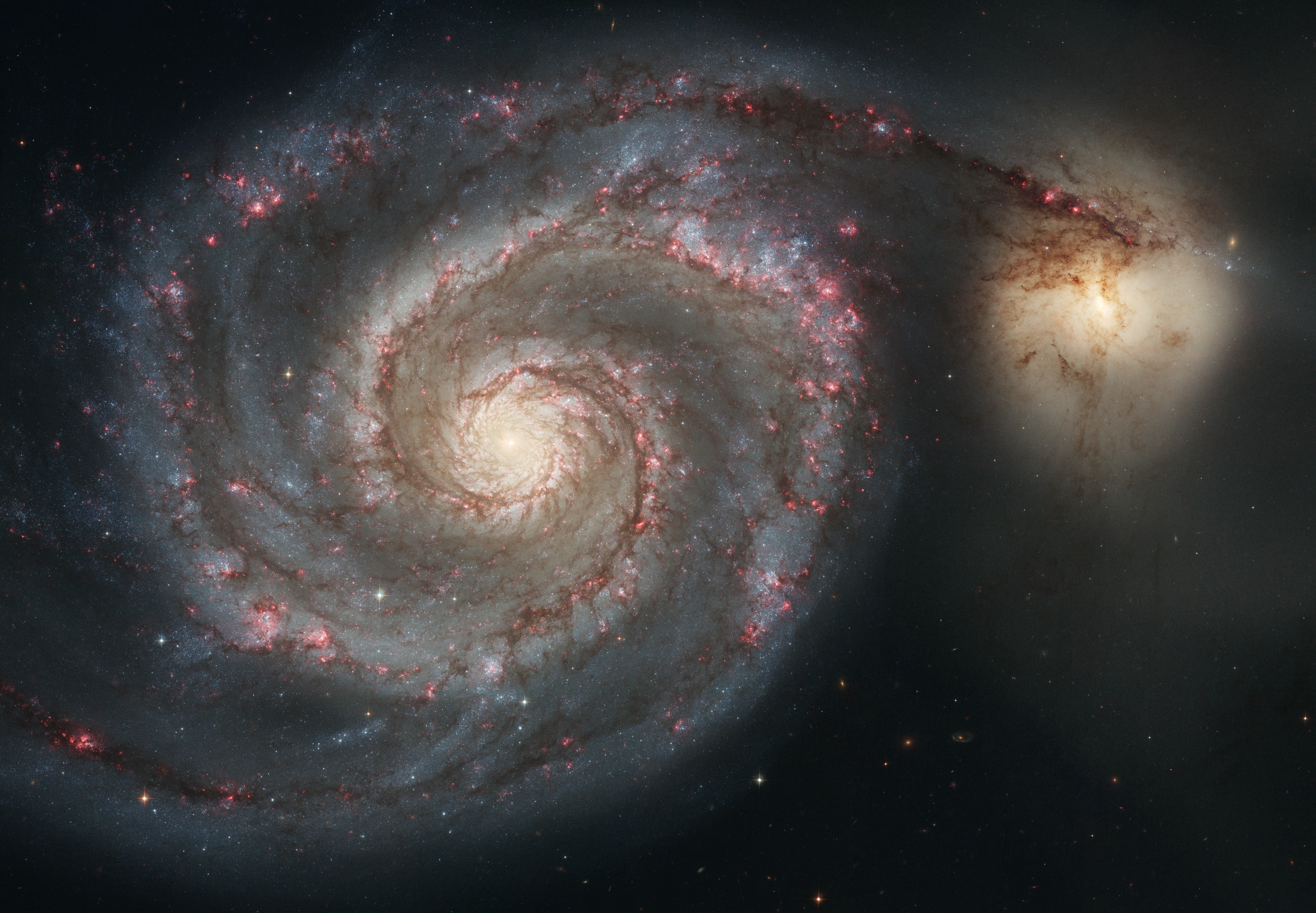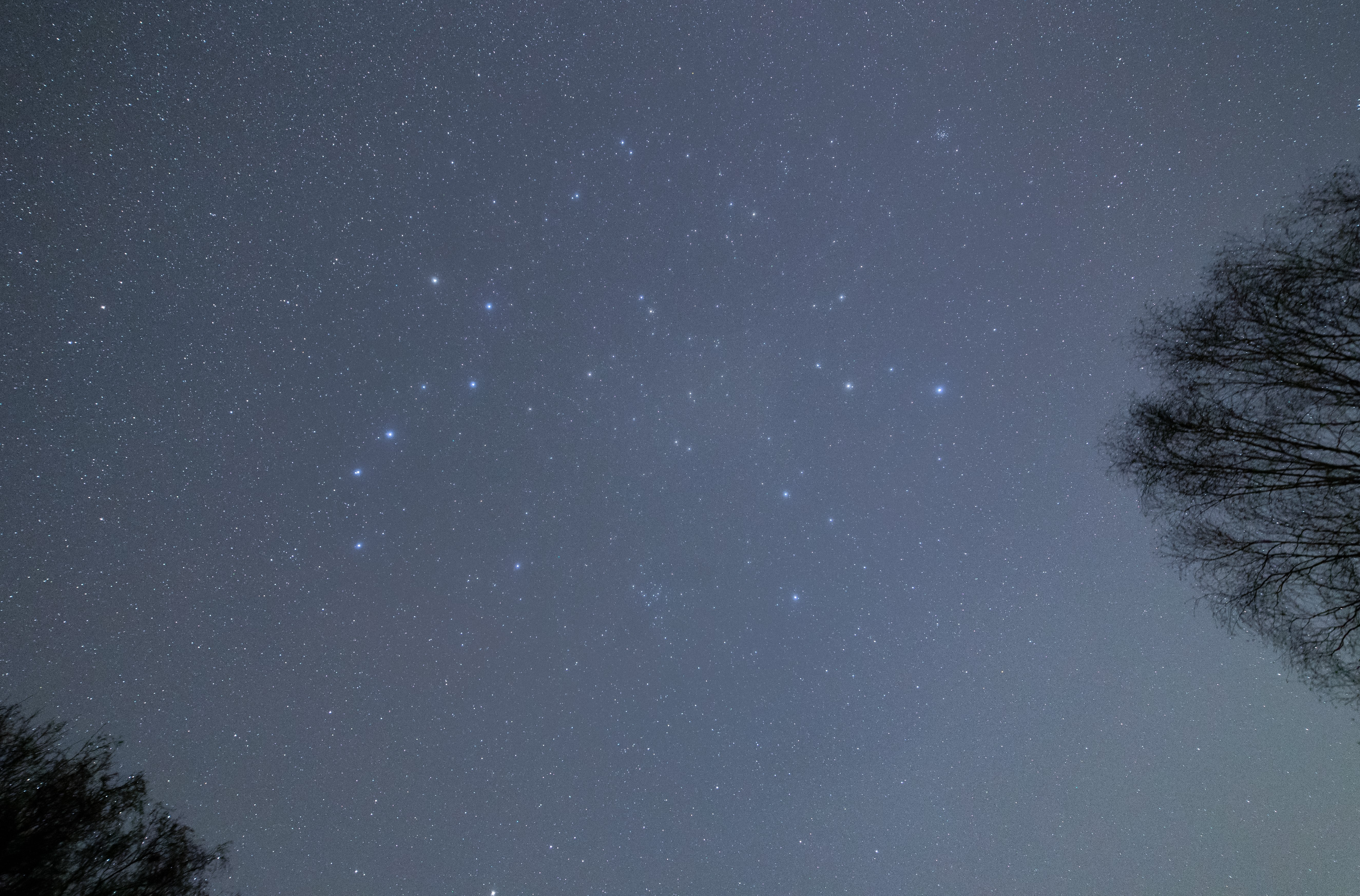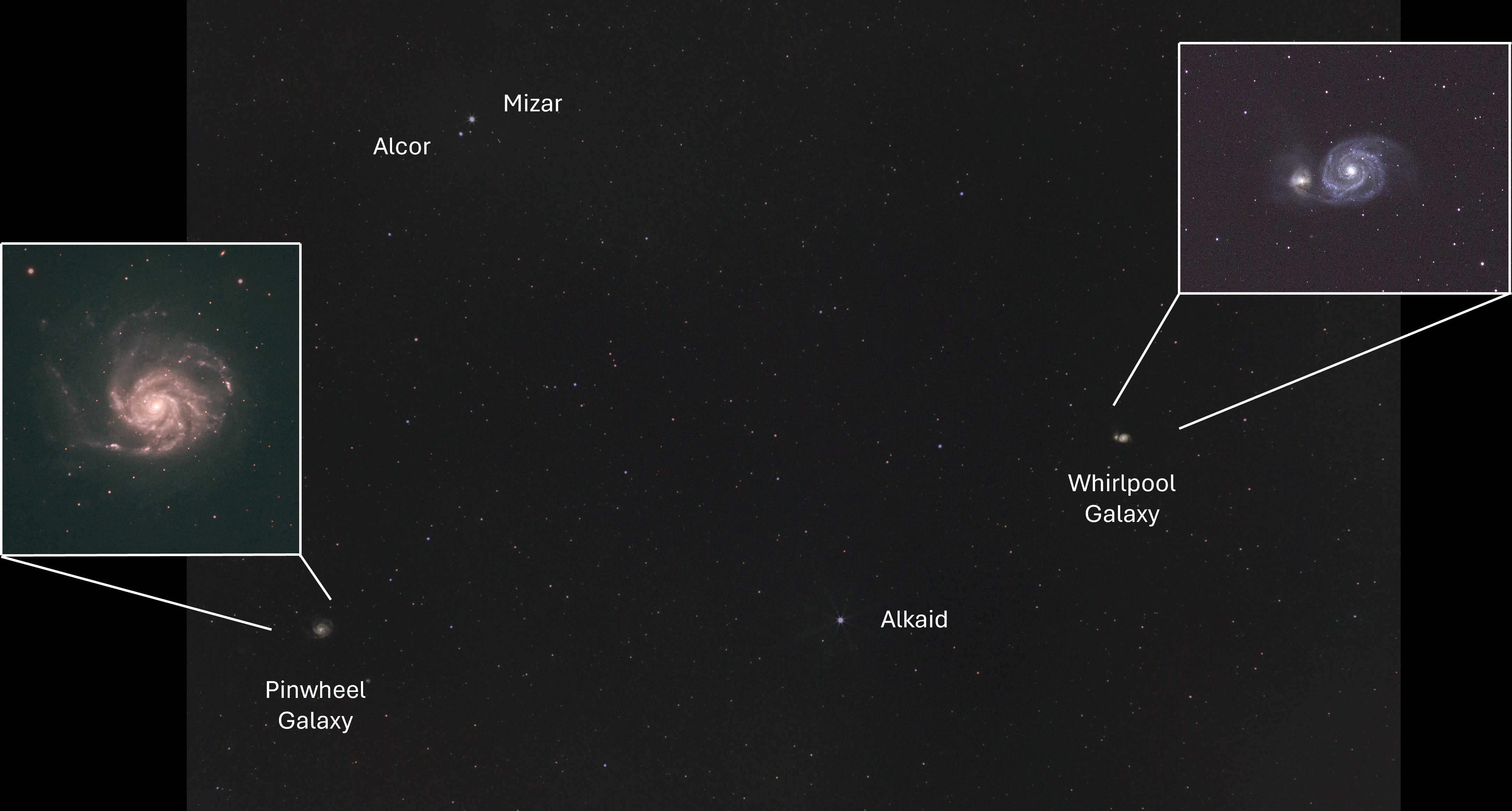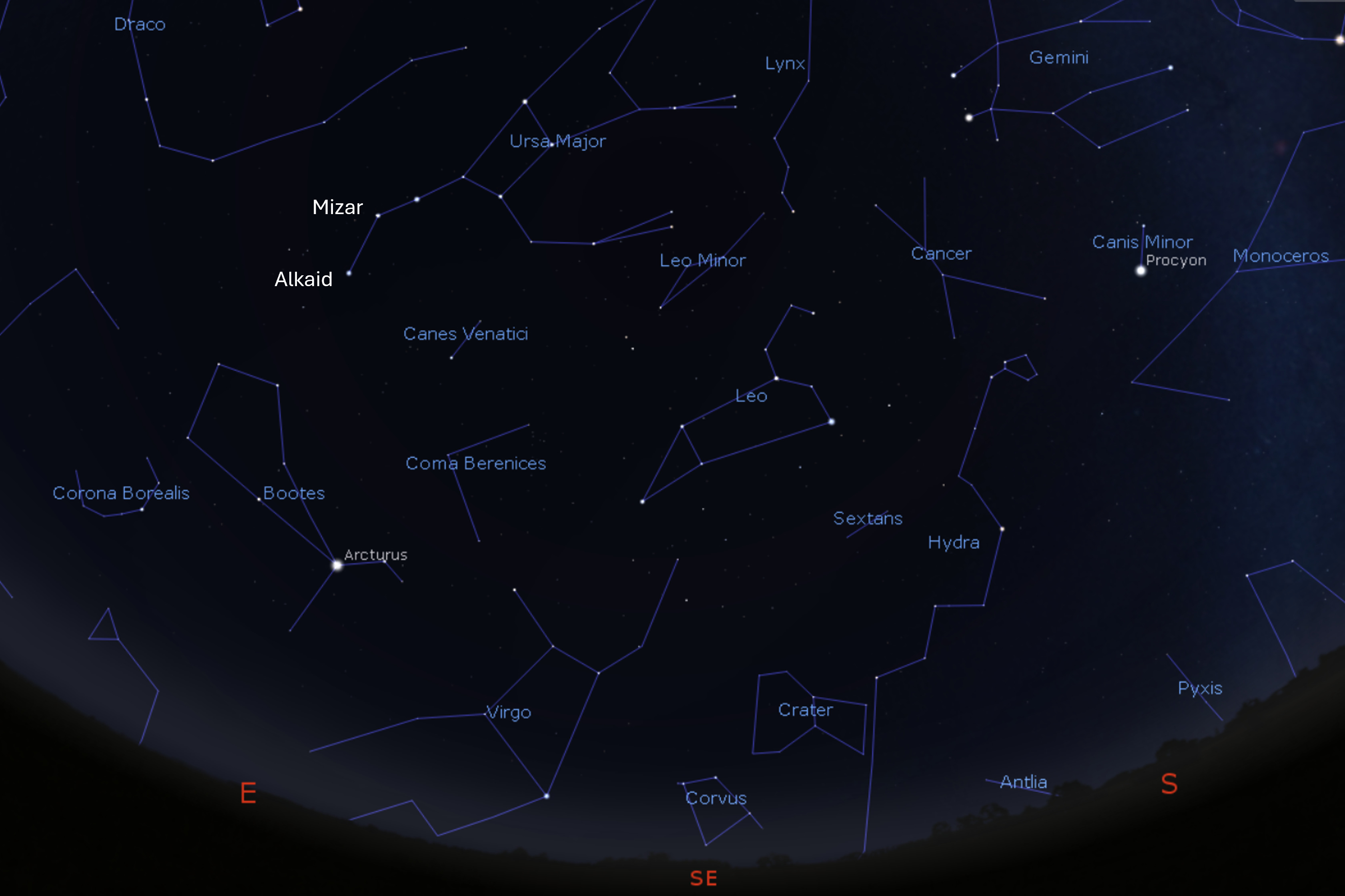While the spring night skies still have a chill in them, it is a wonderful time for some stargazing. Comet Pons-Brooks will be visible in the first half of the month and April provides a great opportunity to see the spring constellations and the Lyrids meteor shower later.
More westerly parts of the UK will also experience a partial solar eclipse on Monday 8 April.

Comet Pons-Brooks
This Comet starts the month in the constellation of Aries (see the star-map in last month’s edition) and continues to brighten in our western evening skies, with observers from dark-sky sites reporting seeing it with the naked eye.
Unfortunately it will be increasingly difficult to spot due to the glow of the lighter evenings, and the middle of the month, where the comet will lie just beneath the planet Jupiter, will likely be the last opportunity to spot it.
The spring constellations host spectacular galaxies
While the winter constellations of Orion, Taurus and Auriga begin to glide towards the western horizon after dark this month, the large spring constellations of Leo and Ursa Major are now prominent in the south-east.
Leo chases the constellation of Cancer (the Crab), a simple but distinctive constellation notable for the fuzzy patch of light that portrays the crab’s shell. This light is actually emerging from ‘Praesepe’ or the ‘Beehive Cluster’, a group of around 1,000 stars that lie around 600 light-years away.

Ursa Major is the largest constellation in the skies of the northern hemisphere, and is probably best known for the brighter stars within it that make up the pattern of the Plough, or ‘Big Dipper’.
These seven stars are visible even from light polluted towns and cities and make up the hindquarters and tail of the Ursa Major, the ‘Great Bear’.
If you have binoculars or a telescope, scan the skies around the star Alkaid (see the sky map below to locate this star) where two large galaxies can be found.
The Pinwheel Galaxy (or ‘Messier 101’) is a galaxy of around a trillion stars lying around 20 million light-years away.
The Whirlpool Galaxy (or ‘Messier 51’) lies in neighbouring constellation Canes Venatici, and actually consists of two galaxies that are merging together due to gravity. It hosts around 100 billion stars and lies around 30 million light-years away.
These galaxies will appear as very small and faint fuzzy patches of light, though under darker skies away from the bright lights of our towns and cities, even small telescopes will enable you to see more detail in these galaxies.

The Lyrids meteor shower
Meteors, often called ‘shooting stars’, occur when small fragments of rock, dust and ice left in the wake of comets or asteroids, fall into our atmosphere and burn up.
This month brings the Lyrid meteor shower, which occurs as Earth passes through the material left behind the comet C/1861 G1 Thatcher, with fragments entering our atmosphere at around 50km (30miles) per second.
Did you know?
The Lyrids are the oldest recorded meteor shower, with Chinese astronomers recording its appearance in the night sky over 2,500 years ago!
Chinese astronomers recorded sightings of the Lyrid meteors as far back as 687BC, but as the comet causing them only re-appears every 416 years, it wasn’t discovered until 1861.
We’ll not see Comet Thatcher again in our lifetimes, with its next passage around the Sun expected around 2283.
It's likely there will be an increased number of meteors visible throughout the second half of the month, with the peak of the shower is expected to fall on 22 - 23 April.
For the best chance to spot them you’ll need to face away from the near-full Moon that coincides with the shower’s peak and avoid any bright sources of light. Give your eyes time to adapt to the dark and spend some time looking up at the stars – good luck!

Partial solar eclipse
While the UK won’t see a total solar eclipse until 2090, observers in Ireland and the western parts of the UK will be treated to a partial solar eclipse this month. On Monday 8 April, a narrow strip across the United States will experience ‘totality’, as the Moon passes directly between the Sun and our planet.
The Sun will already have set across much of England by the time the eclipse begins at 7:55pm, but much of Scotland, Wales and the south-western tip of England will get a few minutes to see the Sun partially eclipsed before it sets.
SAFETY: While the Sun may look less bright in the evenings, it can still damage your eyes as well as optical equipment if looking directly at it. It is important to use a special filter to view the sun safely.
For information on the eclipse in your location and for exact timings, you can find more information here.
------
We are deeply saddened to learn that Welsh astrophotographer Alyn Wallace has died. Alyn’s award-winning astrophotography, introductions to the night sky, tutorials and many other works inspired and informed countless stargazers and photographers alike. You can find some of Alyn’s remarkable images on Instagram, X and Flickr.
Leave a comment